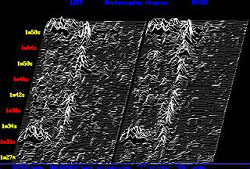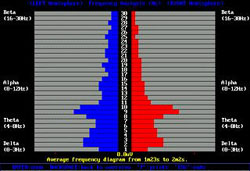EEG after Concussion: Electroencephalography / EEG
EEG after concussion is a real time test. It often happens to be normal and does not present with brain injury signs. This test is done to record the electrical activity of the brain. It is done with electrodes hooked up to the head and attached to a computer with wires. It then records electric activity. It can record abnormal signals and can be used to determine whether a patient has epilepsy. Seizures may be recorded. But it also can detect brain injury. By no means is this a test to rule or rule out either brain injury of epilepsy.
 EEG is only sensitive to brain abnormalities while it is being administered.
EEG is only sensitive to brain abnormalities while it is being administered.- EEG is rarely positive in concussion cases.
- EEG is useful in cases with seizures, but it is important to try and simulate seizure activity, or consider the ambulatory EEG.
Principal Role of EEG (Electorencephalography)
“The principal role of the EEG, however, is in the evaluation of persons with epilepsy. First of all, it must be remembered that about 50 per cent of those who have had an undoubted tonic-clonic seizure will have a normal EEG. It follows that a normal EEG does not prove or disprove a diagnosis of epilepsy.”


Hopkins, Clinical Neurology, ©Oxford University Press, 1993
The EEG after concussion is a very safe test. There isn’t any electrical current going to the brain which sometimes may be confused with electric shock. This test is only to read the electrical activity going on in the brain. This is known to be a risk free test and may or may not be very informative on whether there are seizures present or brain injury.
EEG Resources PET – Positron Emission Tomography